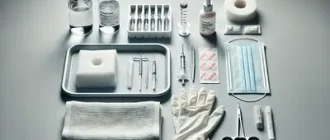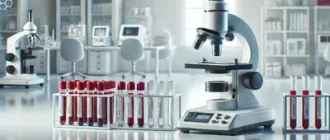Sickle cell anemia (SCA) is a genetic blood disorder that affects the shape and functionality of red blood cells. Early and accurate detection is crucial for managing symptoms and preventing complications. Let’s explore how modern methods have transformed the diagnosis process, including costs where applicable.
Costs of Diagnostic Tests for Sickle Cell Anemia
| Test | Cost Range (USD) |
|---|---|
| Newborn Screening | $50 – $100 |
| Hemoglobin Electrophoresis | $30 – $150 |
| DNA Analysis | $200 – $400 |
| Complete Blood Count (CBC) | $20 – $50 |
| Point-of-Care Testing | $5 – $15 |
What Is Sickle Cell Anemia, and Why Is Early Detection Important?
Sickle cell anemia causes red blood cells to become rigid and crescent-shaped, reducing their ability to carry oxygen efficiently. According to Dr. Sophie Lanz from the Mayo Clinic, “The unique shape of these cells significantly compromises blood flow, leading to life-altering complications if left untreated.” Early detection not only mitigates these risks but also opens the door to advanced therapies, including hydroxyurea treatment and bone marrow transplants. Dr. Alisha Patel, a hematologist from Johns Hopkins, highlights, “Timely interventions can add years to a patient’s life and dramatically improve their quality of living.”
Sources
- Mayo Clinic: Sickle Cell Anemia Overview
- Johns Hopkins Medicine: Sickle Cell Treatment and Research
Modern Detection Methods: What’s Available Today?
1. Newborn Screening
Most U.S. states mandate newborn screening for sickle cell anemia. A small blood sample is taken from the baby’s heel and tested for abnormal hemoglobin using techniques such as:
- High-Performance Liquid Chromatography (HPLC): This method separates and identifies different types of hemoglobin with high accuracy.
- Isoelectric Focusing (IEF): Another precise method to identify abnormal hemoglobin patterns.
Cost: Typically covered by state health programs; private costs can range from $50 to $100 per test.
2. Hemoglobin Electrophoresis
This diagnostic test is often used for older children and adults. It separates hemoglobin types based on electrical charge, making it possible to detect sickle cell hemoglobin (HbS).
Cost: $30 to $150 depending on the lab and insurance coverage.
3. DNA Analysis
DNA analysis provides definitive confirmation of sickle cell anemia by identifying mutations in the HBB gene. This method is particularly useful for prenatal testing or when other tests are inconclusive.
Cost: Around $200 to $400, often higher for prenatal testing.
4. Complete Blood Count (CBC) with Peripheral Smear
A CBC measures red blood cell counts, hemoglobin levels, and other indicators. A peripheral smear allows direct observation of sickle-shaped cells under a microscope.
Cost: $20 to $50 for CBC; additional $20 to $40 for a peripheral smear.
5. Point-of-Care Testing
Portable devices like the Sickle SCAN™ are gaining popularity for their speed and simplicity. These tools can provide results within 30 minutes, making them ideal for low-resource settings.
Cost: Approximately $5 to $15 per test, depending on the region.
How Accurate Are These Tests?
Modern methods are highly accurate when performed by certified laboratories. Combining tests, such as electrophoresis and DNA analysis, increases diagnostic reliability.
Accuracy of Detection Methods
Can You Test for Sickle Cell Anemia Before Birth?
Yes, prenatal testing options include:
- Chorionic Villus Sampling (CVS): This method, performed at 10-12 weeks of pregnancy, involves collecting a small sample of the placenta to analyze the fetus’s DNA for the sickle cell gene. For example, a case in Chicago highlighted its importance: a couple with a family history of sickle cell disease discovered their baby carried the gene early enough to prepare for specialized care after birth.
- Amniocentesis: Conducted at 15-20 weeks, this procedure collects amniotic fluid for detailed genetic analysis. A recent example from Houston demonstrated its effectiveness: a mother was able to confirm the absence of sickle cell anemia in her fetus, alleviating significant stress during her pregnancy.
These tests analyze the fetus’s DNA for the sickle cell gene.
Cost: $1,000 to $2,000 depending on the healthcare provider and location.
Did You Know?
Did you know that approximately 100,000 Americans live with sickle cell anemia, and early detection has significantly improved life expectancy? (Source: CDC)
Are At-Home Testing Kits Reliable?
At-home genetic testing kits, such as 23andMe, can provide insights into your carrier status for sickle cell traits. However, they cannot diagnose sickle cell anemia. Always confirm results with clinical testing.
Cost: $99 to $200 for carrier status tests.
How Are Costs Managed for Sickle Cell Testing?
Many government programs and non-profits assist with the costs of diagnostic testing, especially for newborns and low-income families. Check with local health departments for available resources.
Editorial Advice
Early detection of sickle cell anemia is the cornerstone of effective management. Whether you’re a concerned parent or an adult suspecting symptoms, modern testing methods offer accessible and accurate solutions. Don’t delay—speak to your healthcare provider about the best diagnostic approach for you or your loved ones.
Sickle Cell Trait vs. Disease Prevalence in the U.S.
| Category | Prevalence (%) |
|---|---|
| Sickle Cell Trait | 8% |
| Sickle Cell Disease | 0.1% |
About the Author
Reyus Mammadli is the author of this health blog since 2008. With a background in medical and biotechnical devices, he has over 15 years of experience working with medical literature and expert guidelines from WHO, CDC, Mayo Clinic, and others. His goal is to present clear, accurate health information for everyday readers — not as a substitute for medical advice.







